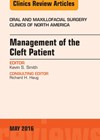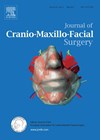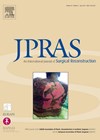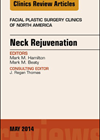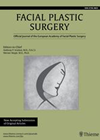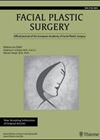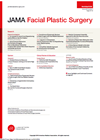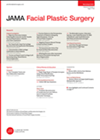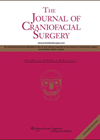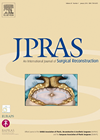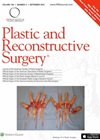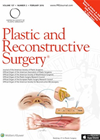
Journal Reviews
Rhinoplasty for the cleft lip and palate patient
The cleft nose is one of the most challenging pathologies for rhinologists and facial plastic surgeons to address. The combination of architectural deformity (related to the extent of lip deformity) and scarring from previous surgery combine to cause the surgical...
A modification of the crescentic flap for nasal skin reconstruction
Non melanoma skin cancers are the most frequent malignant skin tumours and in over 25% of cases affect the nose. Following excision, the reconstruction can be challenging. The nasal complex has adjacent concave and convex surfaces, minimal laxity and nasal...
Assessment of septal deviation in septorhinoplasty
A variety of methods exist to assess the nasal septum, often dependent of the healthcare resources available, and whether there is a specific pathology affecting the function of the nose. The authors present a small series of patients presenting with...
Management of the eye in facial paralysis
Ocular prevention is the first and foremost priority in the management of the patient with facial paralysis. John J Chi presents a review on the management of the upper and lower eyelid in cases of the paralysed face. In the...
Classification and assessment of midfacial fractures: no more Le Fort facial fractures
There is some evidence that severe or complex midfacial or orbital fractures have declined over the last decade. Interestingly there is also evidence of an increase in road traffic accidents but a decrease in facial injuries. This is possibly attributed...
Airway first in patients with facial trauma
Anyone that has ever been on an advanced trauma life support (ATLS) or indeed any other trauma course will be well indoctrinated with the principles of airways, breathing and circulation (ABC). Securing the airway is of paramount importance; but what...
A simplified method for advancement genioplasty
Lower facial aesthetics can be improved with either bony advancement osteotomy or alloplastic implant augmentation. The choice of these options frequently depends on the experience of the surgeon. In their retrospective study on 126 patients, Chan and Ducic, describe and...
Facelifting after radiotherapy for head and neck tumours
This paper sought to determine whether facelifting in patients with prior radiotherapy for head and neck cancer was safe. This study focuses on a small sample of 16 patients matched to controls who were retrospectively assessed for major surgical morbidity....
Psychosocial impact of otoplasty
This paper examines the impact of otoplasty on quality of life. Eighty-one patients who underwent otoplasty were evaluated using questionnaires. They were divided into three age groups: Youth 1 (Y1) = 8-12 years (n = 17), Youth 2 (Y2) =...
Three-dimensional visualisation of the human face using DICOM data
This is an extended case report and something I would not normally review for the purposes of PMFA News. However, we should welcome innovation and use of simple technologies to potentially improve clinical care. This study describes the use of...
Treatment of vertical alar discrepancy
This article explains the way to treat vertical alar discrepancy through alar crease and alar sulcus full-thickness incisions and advancement-rotation of the alar flaps. The authors divide the group of patients into three main categories depending on the vertical movement...
A new method for free-flap total nasal reconstruction
Total nasal reconstruction is a challenge for facial plastic surgeons. Although most cases can be handled with local flaps, a bad state of the perinasal soft tissues, such as patients with head and neck radiotherapy may preclude its use with...

